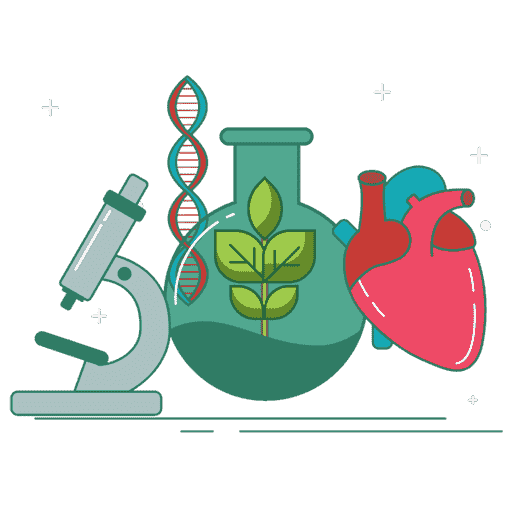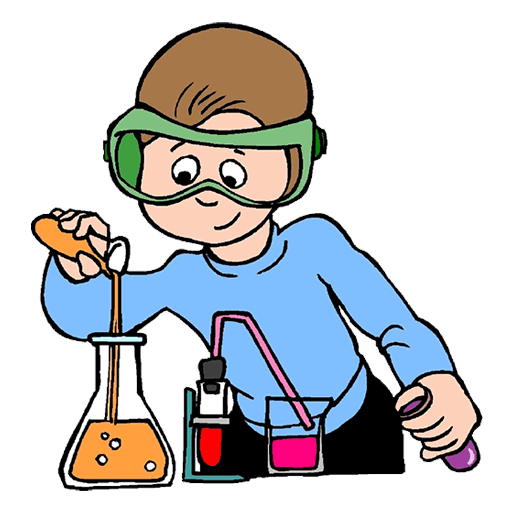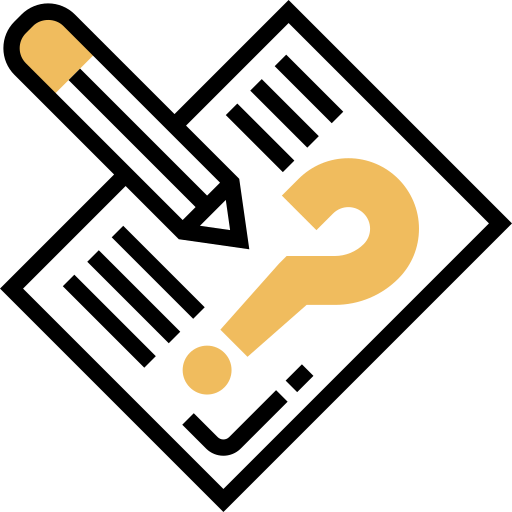CBSE 12th Standard Biology Subject Case Study Questions With Solution 2021 Part - II
By QB365 on 21 May, 2021
QB365 Provides the updated CASE Study Questions for Class 12 Biology, and also provide the detail solution for each and every case study questions . Case study questions are latest updated question pattern from NCERT, QB365 will helps to get more marks in Exams
QB365 - Question Bank Software
CBSE 12th Standard Biology Subject Case Study Questions With Solution 2021 Part - II
12th Standard CBSE
-
Reg.No. :
Biology
-
Read the following and answer any four questions from (i) to (v) given below:
A woman unable to conceive after many years of regular unprotected coitus went to specialised infertility clinic. On complete examination, woman was found to be normal while male partner was diagnosed with infertility. Male partner is unable to copulate the female. Couple was advised to opt for assisted reproductive technology (ART).
(i) Which ART could have been useful for this couple?(a) ZIFT (b) IUT (c) AI (d) GIFT (ii) In which of the following infertility issues could this technique be used?
(a) Anovulation (b) Oligospermia (c) Low fructose content in seminal fluid (d) All of these (iii) Which among the following techniques is useful to conceive when there is very low sperm count?
(a) GIFT (b) Test-tube baby (c) IUT (d) ICSI (iv) Assertion: Artificial insemination (AI) is intra-uterine insemination.
Reason: In AI, sperms collected from donor are introduced into the uterus.(a) Both assertion and reason are true and reason is the correct explanation of assertion (b) Both assertion and reason are true but reason is not the correct explanation of assertion (c) Assertion is true but reason is false (d) Both assertion and reason are false (v) Success rate of artificial insemination technique is
(a) 20-40% (b) 60-70% (c) 40-50% (d) 5-7%. (a) -
Read the following and answer any four questions from (i) to (v) given below :
Riya studies in II standard in a government schooL She belongs to a backward family and her parents did not get her properly vaccinated according to immunisation programme. Once while playing in school playground she fell down due to weakness and developed high fever, headache and stiffness in her neck. Identify the illness she could be suffering from and answer the following questions.
(i) The microbe responsible for Riyas illness could be(a) Vibrio cholerae (b) Enterovirus (c) Plasmodium (d) Mycobacterium. (ii) Which vaccine, if administered earlier, would have saved Riya from the illness she unfortunately contracted?
(a) Salk vaccine (b) MMR vaccine (c) BCG vaccine (d) Varicella vaccine (iii) The disease that Riya has contracted spreads through
(a) bite of an infected mosquito (b) bite of an infected dog (c) faecal oral route (d) direct contact with the infected person. (iv) Riya can spread her illness to other children through
(a) her faeces (b) direct contact (c) coughing and sneezing in open (d) vectors. (v) Assertion: Polio produces inflammation of the nervous system.
Reason: Stiffness of the neck, paralysis of particular skeletal muscle is an important symptom of polio.(a) Both assertion and reason are true and reason is the correct explanation of assertion. (b) Both assertion and reason are true but reason is not the correct explanation of assertion. (c) Assertion is true but reason is false (d) Both assertion and reason are false. (a) -
Read the following and answer any four questions from (i) to (v) given below:
The given graphs show fluctuations in blood sugar of person X and Y during a 24 hour time period.
Based on the above information, answer the following questions.
(i) Which of the following holds true for person X?(a) Person X is suffering from type I diabetes. (b) Person X shows severe insulin deficiency and beta cell depletion. (c) Person X is normal and shows good control of blood sugar level. (d) Person X is subjected to excessive urination and abnormal thrust. (ii) The given graph indicates that person Y is suffering from
(a) diabetes (b) hypertension (c) atherosclerosis (d) rheumatic heart disease. (iii) Which of the following conditions are common in person Y?
(a) Excretion of glucose in urine and excessive urination (b) Polydipsia and mild beta cell depletion (c) Progressive erosion of articular cartilage at synovial joint (d) Both (a) and (b) (iv) A person suffering from diabetes mellitus becomes weak because
(a) the cells are unable to utilise glucose and other carbohydrates for energy production (b) degradation of fat increases production of toxic ketone bodies (c) cells utilize proteins for obtaining energy (d) all of these. (v) Assertion: Type I diabetes involves failure of insulin to facilitate the movement of glucose into cells.
Reason: Type II diabetes is caused by failure of beta cells to produce adequate amount of insulin due to beta cell depletion.(a) Both assertion and reason are true and reason is the correct explanation of assertion. (b) Both assertion and reason are true but reason is not the correct explanation of assertion. (c) Assertion is true but reason is false. (d) Both assertion and reason are false. (a) -
Read the following and answer any four questions from (i) to (v) given below :
Turner's syndrome is an example of mono somy. It is formed by the union of an allosome free egg and a normal 'X' containing sperm or a normal egg and an allosome free sperm. The individual has 2n = 45 chromosomes (44 + X0) instead of 46. Such individuals are sterile females who have rudimentary ovaries, under developed breasts, small uterus, short stature, webbed neck and abnormal intelligence. They may not menstruate or ovulate. This disorder can be treated by giving female sex hormone to the women from the age of puberty to make them develop breasts and have menstruation. This makes them feel more normal.
(i) Number of Barr body present in a female with Turner's syndrome is(a) 0 (b) 1 (c) 2 (d) < 2. (ii) Turner's syndrome is an example of
(a) aneuploidy (b) euploidy (c) polyploidy (d) autosomal abnormality (iii) Turner's syndrome is a/an
(a) autosomal recessive Mendelian disorder (b) autosomal dominant Mendelian disorder (c) sex linked Mendelian disorder (d) chromosomal disorder (iv) Which of the following statements regarding Turner's syndrome is incorrect?
(a) It is a case of monosomy of chromosomes (b) The suffering individual is a sterile female having one 'X' chromosome missing in the cells (c) The problem is due to an extra chromosome (d) The individual are of short stature (v) Assertion : Turner's syndrome is caused due to absence of anyone of the X and Y sex chromosome.
Reason : Individuals suffering from Turner's syndrome show masculine as well as feminine development(a) Both assertion and reason are true and reason is the correct explanation of assertion. (b) Both assertion and reason are true but reason is not the correct explanation of assertion (c) Assertion is true but reason is false (d) Both assertion and reason are false (a) -
Read the following and answer any four questions from (i) to (v) given below:
Aditya went to his hometown located in countryside along with his parents during his summer vacations. His grand parents' house is surrounded by farmland from all sides. Lots of crops were growing nearby and Aditya was very excited to visit the crop fields. He seeked permission from his mother to play in farmland along with his friends and then went to play in the fields. On returning back he had running nose, watering eyes and continuous sneezing which was very frequent. The symptoms worsened with time. Based on the above information, answer the following questions.
(i) What could be the possible reason for Adityas condition?(a) Allergy (b) Infection (c) Malnutrition (d) Genetic disorder (ii) How can allergy be diagnosed in a person?
(a) Presence of large amount of IgE antibodies in the blood (b) Presence of large number of bacteria in the blood (c) Presence of bilirubin and bilirubin pigments in the stool (d) Presence of sickle shaped RBCs in the blood (iii) The symptoms which Aditya developed on account of being allergic are consequence of
(a) inflammation of membrane lining the nose and conjunctiva (b) swelling up of tissue surrounding bronchioles of lungs (c) dilation of all arteries so that large amount of fluid passes from blood to tissues. (d) all of these (iv) Name the type of allergy that Aditya developed.
(a) Allergy (b) Anaphylaxis (c) Hay fever (d) Urticaria (v) Assertion: Hay fever is the form of allergy due to pollens of grasses and other plants.
Reason : Hay fever symptoms are due to release of histamines and often respond well to treatment with antihistamines.(a) Both assertion and reason are true and reason is the correct explanation of assertion. (b) Both assertion and reason are true but reason is not the correct explanation of assertion. (c) Assertion is true but reason is false. (d) Both assertion and reason are false. (a) -
Read the following and answer any four questions from (i) to (v) given below:
A group of teenagers was involved in drug abuse. They used syringes and needles to inject drugs. They indulged in this habit when they became adults. Administration of drug through needles became a piece of cake for them. Raj was the most active drug abuser amongst them and used to take drugs in high profile parties. In a span of time he started losing weight and suffered persistent diarrhoea. He developed constant low grade fever and used to catch opportunistic infection. When he consulted a doctor, he got himself tested for HIV in his blood and finally diagnosed with AIDS.
Based on the above information, answer the following questions.
(i) Select the incorrect statement.(a) AIDS is a disorder of cell mediated immune system of the body. (b) AIDS is caused by Human Immunodeficiency virus. (c) AIDS infections were detected in India for the first time in prostitutes ofChennai, Tamil Nadu in 1986. (d) December 10 is recalled as World AIDS Day. (ii) How do you think Raj got AIDS infection?
(a) Through transfusion of HIV infected blood (b) Sexual intercourse with an infected partner (c) Sharing towel with infected friend (d) Use of contaminated needles and syringes to inject drugs (iii) How AIDS can be diagnosed?
(a) ELISA test (b) Ames test (c) Pap's test (d) Widal test (iv) How can AIDS be prevented?
(a) Blood tests of blood donor before transfusion to check for the presence of AIDS virus. (b) Use of disposable needles and syringes for injecting medicines and vaccination (c) Having protected sex by use of condoms (d) All of these (v) Select the correct statement for AIDS virus.
(a) It is rhomboid in shape with a diameter of 10-15 cm. (b) Its genome consists of ds DNA. (c) It consists ofreverse transcriptase enzyme. (d) Its envelope-consists oflipid bilayer and three protein coats. (a) -
Read the following and answer any four questions from (i) to (v) given below:
Kangaroo rat seldom drinks water. It has thick coat to minimise evaporative desiccation. The animal seldom comes out of its comparatively humid and cool burrow during the day time. 90% of its water requirement is met from metabolic water (water produced by respiratory breakdown of fats) while 10% is obtained from its food. Loss of water is minimised by producing nearly solid urine and faeces. As the animal faces acute water scarcity, it develops two types of adaptations: reducing water loss and ability to tolerate desert conditions.
(i) Kangaroo rat is a(a) partial regulators (b) partial conformer (c) regulator (d) conformer (ii) Metabolic water refers to
(a) water required for metabolic activities (b) water present in intercellular fluid (c) water produced during oxidation of fat or carbohydrate (d) water taken in, to promote metabolism. (iii) Desert animals minimise water loss by
(a) producing highly concentrated urine (b) promoting maximum reabsorption of water in kidney tubules (c) possessing one of the longest loop of Henle in kidney tubules (d) all of these. (iv) Assertion : Kangaroo rat can tolerate and thrive in wide temperature range and is known as stenothermal.
Reason: Kangaroo rats go into hibernation during winter to escape cold weather.(a) Both assertion and reason are true and reason is the correct explanation of assertion. (b) Both assertion and reason are true but reason is not the correct explanation of assertion. (c) Assertion is true but reason is false. (d) Both assertion and reason are false. (v) The adaptations in an organism are meant for
(a) optimum primary production (b) optimum life span (c) optimum mobility (d) optimum survival and reproduction. (a) -
Read the following and answer any four questions from (i) to (v) given below:
Age sex structure of a population can be depicted in the form of a pyramid by plotting the percentage of population of each sex in each age class. Two age sex pyramids are as follows.
(i) Which of the following is correct regarding pyramid B?(a) It represents stable population. (b) It represents expanding population. (c) It represents declining population. (d) Both (a) and (b) (ii) Total number of individuals of a species per unit area per unit time is called
(a) population size (b) population density (c) demography (d) population dynamics. (iii) Which of the following is correct regarding age sex pyramid A and B?
(a) A represents the age sex pyramid of developed country. (b) B represents the age sex pyramid of developing country. (c) A represents rapidly growing population. (d) Both (a) and (b) (iv) A population with a large proportion of older individuals than younger ones will likely to
(a) grow larger first and then decline (b) continue to grow indefinitely (c) decline (d) none of these. (v) Assertion: Bell shaped age pyramid represents a stable population.
Reason : In a stable population, proportion of individuals in reproductive age group is higher than the individuals in pre-reproductive age group.(a) Both assertion and reason are true andreason is the correct explanation of assertion. (b) Both assertion and reason are true but reason is not the correct explanation of assertion. (c) Assertion is true but reason is false. (d) Both assertion and reason are false.
(a) -
Read the following and answer any four questions from (i) to (v) given below:
Ananya is a biologist, her research guide assigned project, i.e., to determine the effect of intra-specific competition on the growth of sapling of Eucalyptus. For this, she designed an experiment in which two sets of pots were used. In the first set (set A) only 1 sapling was planted per pot and in the other set (set B) 16 saplings were planted per pot. To check for the effect of intra-specific competition on allocation of resources, a decreasing amount of water was added to each set. The results have been graphically indicated. Which of the following conclusions can indicated as follows:
(i) Which of the following statements can be concluded from the given study?(a) More resources are allocated to the root during low water conditions. (b) Competition for water among individuals of a population causes more root growth as compared to individuals who are growing alone. (c) Lesser leaves are formed under low water conditions. (d) Root growth is higher in individual grown singly as compared to individuals in populations. (ii) Which of the following associations is an example of competitions?
(a) Cuscuta and hedge plant (b) Balanus and Cathamalus (c) Cactus and moth (d) Orchid and mango (iii) If '+ ' sign is assigned to beneficial interaction, '-' sign to detrimental and 0 sign to neutral interaction, then the population interaction of competition refers to
(a) +, + (b) -, - (c) +, - (d) +, 0. (iv) Intraspecific competition is more severe due to
(a) similar needs (b) similar adaptations (c) common resources (d) all of these. (v) Assertion: Two members of a competing species may co-exist.
Reason: Different individuals of a species have different resource requirements.(a) Both assertion and reason are true and reason is the correct explanation of assertion. (b) Both assertion and reason are true but reason is not the correct explanation of assertion. (c) Assertion is true but reason is false. (d) Both assertion and reason are false. (a) -
Read the following and answer any four questions from (i) to (v) given below:
The Kakapo is the world's largest and heaviest parrot, found only in New Zealand. It is unusual in that it is nocturnal, flightless and ground-dwelling. It is an excellent climber of trees, has strong legs that allow it to "jog" several kilometres in a single trip, and has mossy green plumage mottled with brown and yellow. The Kakapo is also critically endangered as of now, there were only few known living individuals left.
(i) Which could be the possible reason for Kakapo to be well-adapted to its environment prior to the arrival of humans in New Zealand?(a) Kakapo was active only in the night when its potential predators would not be out for hunting. (b) The Kakapo would likely be well-camouflaged among the forest foliage due to its greenish plumage. (c) It was able to effectively hunt for food in the night. (d) All of these (ii) When humans started to settle in New Zealand, they took with them non-native animals, including mammals such as cats, dogs and stoats. By which of the following ways, human settlement likely contributed to a near decimation of Kakapo populations in New Zealand?
(a) Habitat destruction (b) Alien species invasion (c) Pollution (d) Both (a) and (b) (iii) All known survived Kakapo have been relocated by the New Zealand government to three predator-free islands, where they are monitored year round by staffs and volunteers to ensure that the birds are safe, healthy and well-fed. The extremely low population of Kakapo is a hurdle to the species becoming viable in the long term, despite such dedicated conservation efforts. This is because
(a) the small population results in very small gene pool (b) there would be very limited genetic diversity among the resulting offspring. (c) of reduced capacity of the species to adapt and survive changes in the environment. (d) All of these (iv) The reasons behind conserving biodiversity have been grouped into which of the following categories?
(a) Narrowly utilitarian (b) Broadly utilitarian (c) Ethical (d) All of these (v) One of the ex situ conservation methods for endangered species is
(a) wildlife sanctuaries (b) biosphere reserves (c) cryopreservation (d) national parks. (a) -
Read the following and answer any four questions from (i) to (v) given below:
Non-native or alien species are often introduced in advertently for their economic and other uses. They often become invasive and drive away-the local species. Exotic species have proved harmful to both aquatic and terrestrial ecosystems. For example, water hyacinth (Eichhornia crassipes) was introduced in Indian waters to reduce pollution. It was clogged water bodies including wetlands at many places resulting in death of several aquatic plants and animals.
(i) Island water ecosystem are the most vulnerable due to(a) small size (b) small number of species (c) increases reproductive capacity (d) both (a) and (b). (ii) Which of the following is not an alien species?
(a) Lantana camara (b) Periplaneta americana (c) Nile Perch (d) Yucca moth (iii) Second major cause of species extinction is
(a) habitat loss and fragmentation (b) over exploitation (c) alien species invasion (d) co-extinction. (iv) Assertion: Eichhornia crassipes drains off oxygen from water and can be seen growing in standing water.
Reason: Eichhornia crassipes is an indigenous species of India.(a) Both assertion and reason are true and reason is the correct explanation of assertion. (b) Both assertion and reason are true but reason is not the correct explanation of assertion. (c) Assertion is true but reason is false. (d) Both assertion and reason are false. (v) The population of species P in a certain community was constant until a population species Q from a distant land was subsequently introduced into that community. The interaction between the two populations is reflected in the graph below.
What could be the possible reason for the decrease in the population of species P over a number of days?(a) Species Q is a predator of species P. (b) Species Q.is a prey species which wiped out the population of species P. (c) Species P and Q compete for space but feeds on different food. (d) None of these (a) -
Read the following and answer any four questions from (i) to (v) given below:
Golden rice was engineered from normal rice by Potrykus and Beyer in the 1990s. The typical golden colour is due to the production of \(\beta\) carotene a precursor of vitamin - A. Golden rice differs from its parental strain by the addition of three \(\beta\) carotene genes. These included two genes from daffodil plant and third from a bacterium. The incorporation of these genes allows the rice plant to modify certain metabolic pathways in its cells to produce \(\beta\)-carotene.
(i) Due to genetic modification golden rice plants produce and store \(\beta\) - carotene in(a) stem (b) seed (c) leaves (d) all of these (ii) Transfer of genes to produce golden rice is achieved by
(a) Agrobacterium (b) pBR322 (c) \(\lambda \text { -phage }\) (d) gene gun (iii) In golden rice two genes were taken from
(a) Narcissus sp. (b) Erwinia (c) Coryza sativa (d) none of these (iv) Golden rice is helpful to fight against disease caused by the deficiency of
(a) Vitamin Bl2 (b) Vitamin C (c) Vitamin A (d) Vitamin D. (v) Golden rice was genetically engineered by
(a) Fire and Mello (b) Potrykus and Beyer (c) Banting and Best (d) Kohler and Milstein (a) -
Read the following and answer any four questions from (i) to (v) given below:
Transgenic cows have extra gene or genes inserted into their DNA. Firstly the genes for the desired product is identified and sequenced. Then a gene construct containing this desired gene is introduced into female cow cells. Transgenic bovine cells are selected and fused with bovine oocytes that have had all of their chromosomes removed. Once fused with the oocyte, the transgenic cells chromosomes are reprogrammed to direct development into an embryo which can be implanted into a recipient cow. The resulting transgenic cow only express the trans gene in her milk. This is because expression of the trans gene is controlled by a promoter specific to lactating mammary cells. The first transgenic cow was 'Rosie:
(i) The gene construct with desired gene is introduced into female cow cells by(a) transformation (b) transduction (c) transfection (d) transplantation. (ii) Production of transgenic cow fulfill the objective of
(a) increased milk production (b) increased meat production (c) molecularfarming (d) all of these (iii) The name of first transgenic cow is
(a) Tracy (b) Dolly (c) Rosie (d) AND!. (iv) Transgenic cow is produced through the implantation of _____containing transgene into recipient cow.
(a) ova (b) embryo (c) mammary cell (d) both (a) and (b) (v) Assertion : Transgenes only express in the mammary glands of transgenic cow.
Reason : Transgenes are present in chromosomes of every cell in transgenic cow(a) Both assertion and reason are true and reason is the correct explanation of assertion. (b) Both assertion and reason are true but reason is not the correct explanation of assertion (c) Asgertion is true but reason is false. (d) Both assertion and reason are false. (a) -
Read the following and answer any four questions from (i) to (v) given below:
Within a region, species richness increases with increasing explored area, but only upto a limit. The given graph explains this relationship.
(i) What does the given figure show?(a) Rivet-popper hypothesis (b) Species-area relationship (c) Proportionate number of species of major taxa (d) \(\alpha\)-ecological diversity (ii) Equation for relationship (A) between species richness and area is
(a) log S = log C + Z log A (b) log C = log S + Z log A (c) Z log A = log S + log C (d) log S = log C + log A. (iii) What is the value of slope of line or regression coefficient Z for frugivorous birds?
(a) 0.1-0.2 (b) 1.15 (c) 0.01-0.1 (d) 0.6-1.2 (iv) The shape of curve for relationship between species richness and areas for wide variety of taxa is
(a) straight line (b) parabola (c) rectangular hyperbola (d) bell shaped. (v) Who gave this concept of increase in species richness with increasing offered area?
(a) Humboldt (b) Odum (c) Edward Wilson (d) Paul Ehrlich (a) -
Read the following and answer any four questions from (i) to (v) given below:
Insulin used to cure diabetes was earlier extracted from pancreas of slaughtered cattle and pigs. Insulin extracted from an animal source, though caused some patients to develop allergy or other types of reactions to the foreign protein. Human insulin consists of two short polypeptide chains: chain A and chain B, that are linked together by disulphide bridges. In mammals including humans, insulin is synthesised as a pro-hormone which contains an extra stretch called the C-peptide. This C peptide is not present in mature insulin and is removed during maturation into insulin.
(i) Identify A in the given figure.
(a) Polypeptide chain A (b) Polypeptide chain B (c) Polypeptide chain C (d) None of these (ii) The following is a list of some stages involved in producing human insulin from genetically engineered bacteria.
1. The bacteria are cultured in a fermenter for large scale production.
2. Recombinant insulin is extracted from the bacterial cells that expresses insulin gene.
3. The same restriction enzyme is used again to cut the bacterial plasmid for insertion of the human insulin gene.
4. Bacteria take up the plasmid carrying the insulin gene.
5. A restriction enzyme is used to cut human DNA to extract the insulin gene.
Select the correct order of these stages.(a) 1,5,3,4,2 (b) 2,4,3,5,1 (c) 4,5,3,2,1 (d) 5,3,4,1,2 (iii) To insert the insulin gene into bacterial DNA, both the bacterial plasmid and the human chromosome containing the insulin gene are treated with the same restriction enzyme. Using the same restriction enzyme ensures that
(a) DNA ligase is able to join the segments of human and bacterial DNA (b) the exact length of nucleotides matching the insulin gene is removed from the plasmid (c) both the bacterial and human DNA will contain sticky ends (d) Sticky ends in the cut plasmid and insulin gene are complementary. (iv) Why is the fermentor important for the production of human insulin by transgenic bacteria
(a) It provides optimal conditions for the transgenic to multiply rapidly. (b) It facilitates the extraction and purification of insulin from the transgenic bacteria. (c) It maximise the rate of fermentation of the transgenic bacteria. (d) It provides the low-oxygen conditions that are important for insulin production. (v) A bacteriologist carries out his first attempt at engineering E.coli with the gene for human insulin. During the process, he realises that his stock of DNA ligase has depleted but decides to continue anyway. What is a likely consequence of his decision?
(a) Bacteria with the rDNA will not be able to form colonies in a fermenter (b) The resulting plasm ids are not able to enter the E.coli bacteria even after applying heat shock. (c) The resulting E.coli bacteria do not contain the human insulin gene. (d) The bacterial plasm ids do not have sticky ends and are unable to accommodate the human gene. (a)
Case Study Questions
*****************************************
CBSE 12th Standard Biology Subject Case Study Questions With Solution 2021 Part - II Answer Keys
-
(i) (c) : Artificial Insemination (AI) is done in infertility cases either due to inability of male partner to copulate the female or due to very low sperm count in the semen of male partner.
(ii) (b) : Oligospermia is very low sperm count.
(iii) (d): ICSI is intra cytoplasmic sperm injection.
(iv) (a)
(v) (a) -
(i) (b) : Riya is suffering from polio that is caused by an Enterovirus, called Poliovirus.
(ii) (a)
(iii) (c) : Polio virus enters the body via alimentary canal (faecal oral route)
(iv) (a): Riya has contracted polio which is transmitted through faecal oral route, as urine and faeces of the patient contain polio virus.
(v) (b) -
(i) (c) : Blood sugar level fluctuations in person X indicate that sugar level never exceed the normal limit and sufficient secretion of insulin at required times removes any extra sugar from blood and converts it into glycogen for future use. This implies that person X is normal and healthy.
(ii) (a) : Elevated blood sugar levels in person Y indicate that he is suffering from diabetes mellitus.
(iii) (d):
(iv) (d):
(v) (d) : Type I diabetes or insulin dependent diabetes mellitus or juvenile diabetes is an autoimmune disorder caused by failure of beta cells to produce adequate amount of insulin. Type II diabetes or non insulin dependent diabetes mellitus involves failure of insulin to facilitate the movement of glucose into body cells. -
(i) (a) : Barr body is a structure consisting of a condensed X chromosome that is found in nondividing nuclei of female mammals. The presence of Barr body is used to confirm the sex of athletes in sex determination tests. It is named after the Canadian anatomist M.L. Barr, who identified it. The number of Barr bodies is one less than total number of X chromosomes. In Turner's syndrome genotype is 45 + X0,so, the number of Barr body is O.
(ii) (a) : Failure of segregation of chromatids during cell division result in the gain or loss of a chromosomes called aneuploidy. For example, Turner's syndrome results due to loss of X chromosome in human females.
(iii) (d) : Turner's syndrome is a chromosomal disorder that occurs due to absence of one chromosome.
(iv) (c) : In Turner's syndrome individual lacks one X chromosome. This situation is known as monosomy.
(v) (d): Turner's syndrome occurs due to absence of X chromosome. Individuals having a single X chromosome 22A + X0 (45) have female sexual differentiation but ovaries are rudimentary. Other associated phenotypes of this condition are short stature, webbed-neck, broad chest, lack of secondary sexual characteristics and sterility. Thus, any imbalance in the copies of the sex chromosomes may disrupt the genetic information necessary for normal sexual development. -
(i) (a) : Aditya most probably had developed some sort of allergy due to pollens of grasses, trees and other plants.
(ii) (a) : Allergies mainly involve IgE antibodies and chemicals like histamine and serotonin from mast cells. IgE antibodies are produced in response to an antigen, coat mast cells and basophils.
(iii) (a) : The allergy which Aditya developed is characterised by inflammation of membrane lining the nose and conjunctiva leading to running nose, watering eyes and constant sneezing.
(iv) (c)
(v) (b) -
(i) (d) : Every year, December 1 is designated as World AIDS Day.
(ii) (d)
(iii) (a) : ELISA test, also called EIA for enzyme immunoassay is used to detect HIV antibody. It checks for certain proteins that the body makes in response to HIY.
(iv) (d)
(v) (c) : HIV is spherical with a diameter of 90-120 nm. Its genome consists of single stranded RNA. The envelope consists of a lipid bilayer derived from host cell membrane and projection knob like glycoproteins. It contains two protein coats. -
(i) (c) : Kangaroo rat is a regulator that performs homeostasis through thermoregulation osmoregulation by physiological adjustments and behavioural changes.
(ii) (c)
(iii) (d)
(iv) (d) : Organisms that can tolerate and thrive in wide temperature range are known as eurythermal. Kangaroo rats do not go into hibernation rather, they stay if}cool moist burrows during summer days.
(v) (d): Adaptation is an attribute of an organism (morphological, physiological and behavioural) that enables it to survive and reproduce in its habitat. Adaptations lead to the formation of some specialised and peculiar features which have evolved over a long period of time through natural selection. -
(i) (b) (ii) (b) : Population density is the number of individual present per unit area at a given time.
(iii) (d) : A represents nearly stable population whereas B represents rapidly growing population.
(iv) (c) : A population with large number of older individuals than younger ones is likely to decline since older individuals do not take part in reproduction.
(v) (c): In a bell-shaped age pyramid, the number of pre-reproductive and reproductive individuals is almost equal. Post-reproductive individuals are comparatively fewer. It represents a stable population. -
(i) (b): Competition is a sort of rivalry among two or more organisms for obtaining the same resources. The competition among individuals of the same species is called intraspecific competition and among members of different species is called interspecific competition. Intraspecific competition is more severe than interspecific competition due to similar needs. Now, according to the given graph, competition for water in a population leads to more root weight (mg) per leaf area (crrr'). This is because competition causes more root growth so that each sapling can derive more water from the pot.
(ii) (b) : The association or interactions of Cuscuta and hedge plant is parasitism, cactus and moth is predation and orchid and mango is commensalism.
(iii) (b)
(iv) (d) : Intraspecific competition is more severe because of common resource, similar needs and similar adaptations.
(v) (d) -
(i) (d) : Since the Kakapo is nocturnal, it was active only in the night when its potential predators would not be out for hunting. With its greenish plumage, the Kakapo could likely be well camouflaged among the forest foliage in the daytime when it is resting hence evading detection by its predators. It was able to effectively hunt for food in the night given its ability to climb trees and travel significant distances over land despite lacking the ability to fly.
(ii) (d): As humans settled in New Zealand, they would have cleared the land to make way for their own needs e.g., farmland, hence shrinking the natural habitats of the Kakapo. The new mammals that were introduced into the Kakapos habitats might have out-competed the Kakapo for the limited food resources available. The new mammals that were introduced might also have easily preyed on the Kakapo (e.g., by using their sense of smell), as the KakapoIikely lacked the necessary adaptations to defend itself given that such predators were never present in the past. For instance, many mammals such as cats are nocturnal and hence would prey on Kakapo when the latter are also active at night.
(iii) (d) : The small populations results in a yery small gene pool, i.e., a very limited variety of alleles / traits among surviving individuals of the species. Even if the existing birds manage to breed and multiply significantly, there would be very limited genetic diversity among the resulting offspring. This would lead to reduce capacity of the species to adapt to and survive changes in the environment. There may also be reduced fitness in the offspring given increased likelihood of homozygosity of recessive harmful! deleterious alleles, which would result in these alleles being expressed to bring about unfavourable phenotypes.
(iv) (d) : We should conserve biodiversity. The reason for this can be broadly divided into three categories:
(i) Narrowly utilitarian (Humans derive a major part of their requirement from organisms). (ii) Broadly utilitarian (Biodiversity is fundamental to ecosystem services of nature).
(iii) Ethical (Every living species has an intrinsic value, it is our moral duty not to destroy them).
(v) (c): Ex situ (off site) conservation is conservation of selected rare plants/animals in places outside their natural homes. It is a desirable approach to save threatened or endangered plant or animal species from extinction. Ex situ conservation includes offsite collections, gene banks, in vitro fertilisation, cryopreservation techniques and tissue culture. -
(i) (d)
(ii) (d) : Pronuba yuccasella shows obligatory mutualistic relationships with Yucca.
(iii) (c) : Alien species invasion is considered to be second major cause of extinction of species.
(iv) (c): Eichhornia crassipes is an aquatic plant, native to Amazon basin. This plant was introduced into India for its beautiful flowers and shape of leaves.
(v) (a) -
(i) (b) : Golden rice is a transgenic variety of rice (Oryza sativa) which contains good quantities of\(\beta\)-carotene (provitamin A - inactive state of vitamin A).\(\beta\)-carotene is a principal source of vitamin A. Since the grains (seeds) of the rice are yellow in colour due to \(\beta\)-carotene, the rice is commonly called golden rice.
(ii) (a) : Foreign genes were inserted into the genome of a tempera,te rice variety by using Agrobacterium tumefaciens as the vector.
(iii) (a) : In golden rice, two genes for \(\beta\)-carotene were taken from daffodil (Narcissus sp.) and one gene from a bacterium Erwinia.
(iv) (c) : Golden rice is rich in\(\beta\)-carotene which is a precursor of vitamin A.
(v) (b) : Prof. Ingo Potrykus and Peter Beyer produced genetically engineered rice by introducing three gene associated with synthesis of carotene. The grains (seeds) of transgenic rice are rich in provitamin. -
(i) (c)
(ii) (d) : The two chief objectives of transgenic cow production are as follows: (i) increased milk and meat production and (ii) molecular farming.
(iii) (c)
(iv) (b) : Transgenic bovine cells are selected and fused with bovine oocytes that have had all its chromosomes removed. Once fused with oocyte, the transgenic cells chromosomes are reprogrammed to direct development into embryo which is implanted into recipient cow.
(v) (b) -
(i) (b)
(ii) (a) : On a logarithmic scale, the relationship between species richness and area is a straight line.
(iii) (b) : The regression coefficient Z have a value of 1.15 for frugivorous birds and mammals of tropical forests of different continents.
(iv) (c)
(v) (b) : While exploring the wilderness South American jungles, Alexander von Humboldt found that within a region, the species richness increased with increasing area but upto a certain limit -
(i) (c) : A represents polypeptide chain C which is removed prior to insulin formation.
(ii) (d)
(iii) (d) : Each particular restriction enzyme produces unique sticky ends. Using the same enzyme for both the bacterial and human DNA will produce complementary sticky ends that can bind together by complementary base pairing. This would allow the human insulin gene to be inserted into the plasmid.
(iv) (a) : The optimal temperature, pH, oxygen and nutrient conditions in the fermenter allow the bacteria containing the insulin gene to reproduce quickly and produce large quantities of it.
(v) (c) : DNA ligase forms strong hydrogen bonds between the DNA bases on the human insulin gene and the bacterial plasmid, producing a continuous double stranded DNA loop. Without DNA ligase, the human insulin gene, despite being able to undergo complementary base pairing with the bacterial DNA at the sticky ends would not be securely inserted into the plasmid. Thus, the resulting E.coli bacteria would receive plasm ids that lack the human insulin gene.
Case Study Questions






































